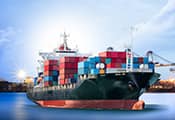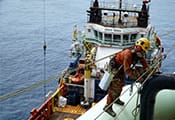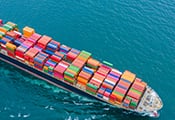Different Types of Containers Used in International Shipping
One may find several types of containers used in international shipping. Every container has its usage concerning the products. Thus, the exporter must choose a wise container accordingly.
Let us discuss the type of containers used in international shipping.
Intermodal Containers
Intermodal containers can be used in different modes of transport. These containers are large in size. The products do not get affected in this container. The intermodal containers include the following.
-
General Purpose Container
The general purpose containers are frequently utilized in the trade business. It is also known as standard containers. It is a durable and airtight container.
-
Dry Freight Container
A dry freight container or dry storage container is airtight as it does not pose any ventilation. Such containers cannot be used for transportation of liquid goods. These containers are used for non-perishable goods.
-
Insulated Container
The insulated or thermal container is a wise choice for maintaining the temperature inside. The terminal container protects the interior from the exterior condition. It keeps the goods cold and controls the effects of climate. It keeps the goods frozen or at a certain temperature during a long voyage. The terminal container is frequently used for perishable goods.
-
Open Top Container
The open-top container is also known as the hardtop container. It has an opening from its top side. The open-top container may contain more cargo compared to other containers. The tarpaulin rubber covers the open side of the container.
-
Flat Rack Container
The flat rack containers are used to transport heavy cargo. This includes timber, boats, buses, machinery, etc.
There are two types of flat rack containers.
- Non-collapsible flat racks
- Collapsible flat racks
-
Reefer Container
Reefer container is also known as refrigerated containers. These containers are used in intermodal transport. It is used to transport perishable goods. This includes vegetables, fruits, and other perishable goods.
-
Tank Containers
Tank containers are cylindrical vessels. These containers are used to deliver hazardous or non-hazardous goods. This includes food, wines, chemical, gases and other toxic substances. This container can carry goods ranging 10,000 to 26,000 liters.
-
High Cube Containers
The high cube containers are similar to standard containers. However, it has extra space compared to the standard container. In addition, such containers are made up of steel and aluminum.
-
Double Door Container
Double-door containers or tunnel containers are a modified version of general-purpose containers. It has a door at both of its ends. When both doors are open, it looks like a tunnel.
-
Open Side Storage Containers
The side door container has a door on the longer side of the container. It is straightforward to load and unload the goods using side door containers.
-
SECU Containers
SECU refers to Stora Enso Cargo Unit. It is a type of intermodal container which is invented by a forest and paper company. It is used to ship bulk cargo, such as paper. The container can carry 80 tons of goods or cargo.
Ocean Freight Containers
Ocean freight containers are used in sea modes of transportation. The ocean freight container includes the following containers.
- Dry Van Shipping Containers
- Reefer Tank Shipping Containers
Other Containers
The listed below are the other container used in different modes of transportation. This includes the following.
- Drum Containers (also known as cylindrical containers)
- Swap body Containers
- Half-height containers
- Car carrier containers
- Cargo storage roll containers
- Intermediate bulk shift containers
- Pallet wide containers
- Special purpose containers
The aforementioned containers are used to export the goods. The shipper may purchase marine cargo insurance for the goods contained in the aforementioned containers.
Conclusion
The containers are used in order to move the products from one country to another. The exporter must choose the containers wisely and purchase the marine insurance policy for the cargo contained in the container.


































 Expert advice made easy
Expert advice made easy


